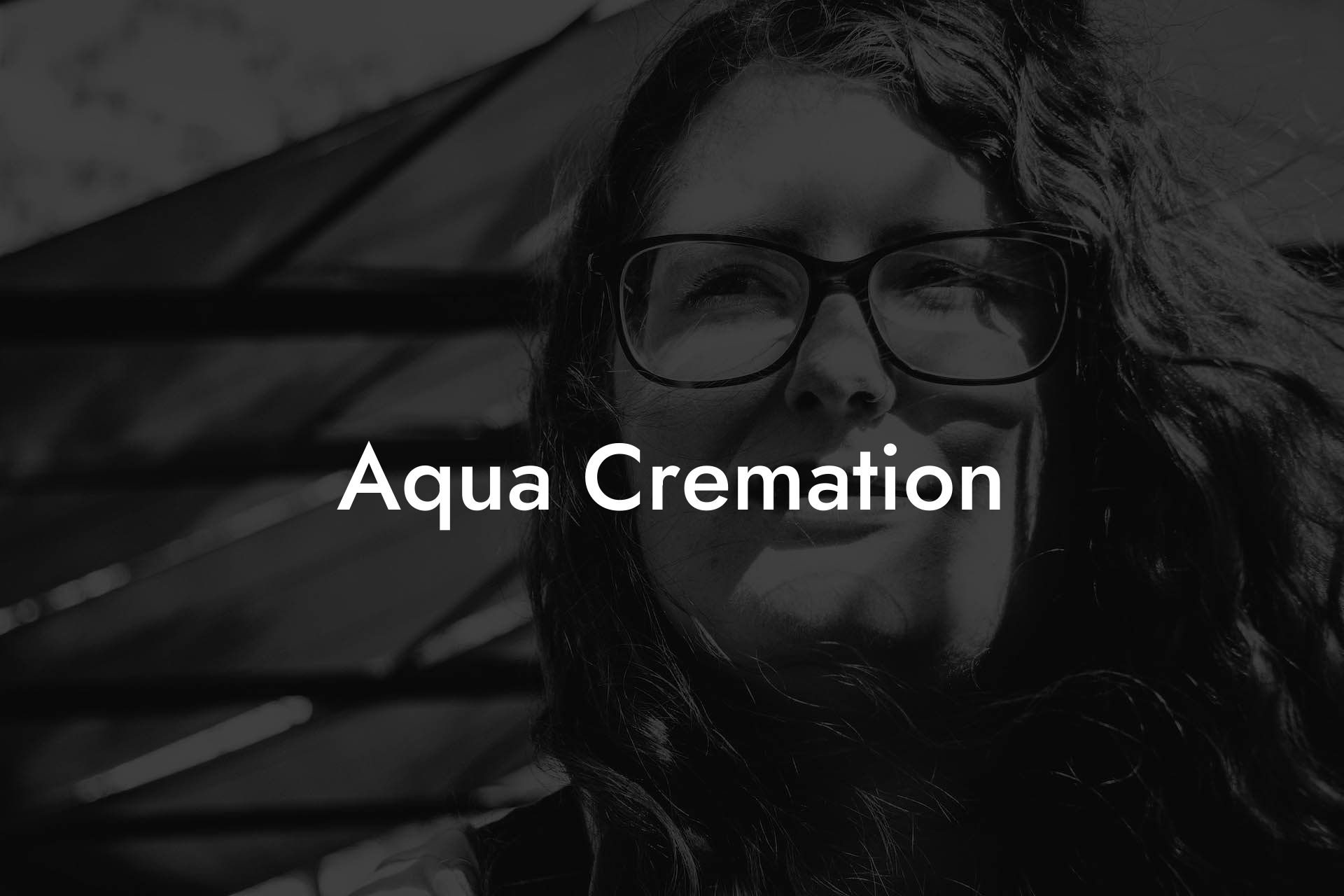Imagine a world where saying goodbye to a loved one is not only a celebration of their life but also a gentle farewell to the planet. Welcome to the world of aqua cremation, a revolutionary, eco-friendly alternative to traditional flame-based cremation that's changing the way we think about death and the environment.
We know how hard that can feel. You are sorting through precious memories, searching for the right words, and trying to hold it together when it is time to speak. It is a lot to carry.
That is why we created a simple step by step eulogy writing guide. It gently walks you through what to include, how to shape your thoughts, and how to feel more prepared when the moment comes. → Find Out More
Quick Links to Useful Sections
What is Aqua Cremation?
Aqua cremation, also known as alkaline hydrolysis, is a water-based process that uses a gentle, chemical-free solution to break down the body, reducing it to bone fragments and a sterile liquid. This innovative method is not only more environmentally friendly than traditional cremation but also offers a more dignified and peaceful farewell.
The process is simple yet powerful: a combination of water, alkali, and heat is used to accelerate the natural decomposition process, mimicking the way the body would naturally return to the earth. The result is a dignified, eco-conscious alternative that's gaining popularity worldwide.
The Environmental Impact of Traditional Cremation
Traditional cremation is a significant contributor to greenhouse gas emissions, air pollution, and environmental degradation. The process releases harmful toxins, including mercury, dioxins, and furans, into the atmosphere, posing a threat to both human health and the environment.
In contrast, aqua cremation is a zero-emission process that uses significantly less energy than traditional cremation. It's a game-changer for those who care about the planet and want to reduce their carbon footprint, even in death.
How Does Aqua Cremation Work?
The aqua cremation process is straightforward and respectful:
- The body is placed in a specialized vessel, and a gentle, chemical-free solution is added.
- The vessel is then heated to a specific temperature, accelerating the natural decomposition process.
- After several hours, the body has broken down into bone fragments and a sterile liquid.
- The bone fragments are then processed into a powder, similar to traditional cremated remains.
The entire process is dignified, peaceful, and environmentally friendly, offering families a meaningful way to say goodbye while also giving back to the planet.
The Benefits of Aqua Cremation
Aqua cremation offers a range of benefits, from environmental sustainability to a more dignified farewell:
- Zero emissions and significantly less energy consumption than traditional cremation
- A gentle, chemical-free process that respects the body and the environment
- A more dignified and peaceful farewell, reducing the emotional impact of traditional cremation
- A unique opportunity to give back to the planet, even in death
By choosing aqua cremation, families can rest assured that they're not only honoring their loved one but also the planet.
Aqua Cremation: A Growing Trend
As concern for the environment continues to grow, aqua cremation is becoming an increasingly popular choice for families around the world. With its eco-friendly credentials, dignified process, and meaningful farewell, it's no wonder that this innovative method is changing the way we think about death and the environment.
From the United States to Europe, Australia, and beyond, aqua cremation is gaining traction as a sustainable, respectful alternative to traditional cremation. Join the movement and choose a farewell that not only honors your loved one but also the planet.
Frequently Asked Questions About Aqua Cremation
Here are some frequently asked questions about aqua cremation:
1. Is aqua cremation legal?
Yes, aqua cremation is legal in many countries, including the United States, Canada, and parts of Europe.
2. Is aqua cremation more expensive than traditional cremation?
The cost of aqua cremation varies depending on the location and provider, but it's generally comparable to traditional cremation.
3. Can I still have a traditional funeral service with aqua cremation?
Absolutely. Aqua cremation can be combined with traditional funeral services, allowing families to still hold a meaningful farewell.
4. Is aqua cremation suitable for all types of bodies?
Yes, aqua cremation is suitable for all types of bodies, including those with pacemakers, implants, or other medical devices.
5. Can I scatter the remains after aqua cremation?
Yes, the remains can be scattered or buried after aqua cremation, just like with traditional cremation.
Resources and Community Support: Your Next Steps
If you're interested in learning more about aqua cremation or would like to connect with others who have chosen this eco-friendly farewell, here are some resources and community support options:
- Aqua Cremation Association: A professional organization dedicated to promoting and developing aqua cremation.
- Green Burial Council: A non-profit organization that promotes environmentally friendly death care practices, including aqua cremation.
- Aqua Cremation Forum: An online community where families can share their experiences, ask questions, and connect with others who have chosen aqua cremation.
Join the movement towards a more sustainable, respectful farewell. Explore these resources and connect with others who share your values.

